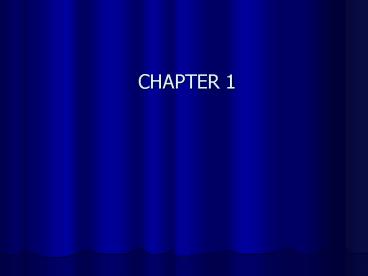Connectors - PowerPoint PPT Presentation
1 / 51
Title:
Connectors
Description:
Since fiber optic technology was introduced in the late 70s Each new design was ... Evanescent wave coupling. Single mode. Radiative coupling. Multi-mode ... – PowerPoint PPT presentation
Number of Views:1084
Avg rating:3.0/5.0
Title: Connectors
1
CHAPTER 1
2
Connectors
3
- 1.1 connector features and losses brief
4
- Since fiber optic technology was introduced in
the late 70s Each new design was meant to offer
better performance - less light loss and back reflection.
- easier termination.
- and lower cost.
- End gaps cause two problems
- Insertion loss emerging cone of light from the
connector will spill over the core of the
receiving fiber and be lost. - return loss the air gap between the fibers
causes a reflection when the light encounters the
change n refractive index from the glass fiber to
the air in the gap. This reflection (called
fresnel reflection) amounts to about 5 in
typical flat polished connectors, and means that
no connector with an air gap can have less than
0.3 dB loss.
5
- Two sources of loss are directional
- numerical aperture (NA) Light from a fiber with
a larger NA will be more sensitive to angularity
and end gap, so transmission from a fiber of
larger NA to one of smaller NA will be higher
loss than the reverse. - core diameter light from a larger fiber will
have high loss coupled to a fiber of smaller
diameter, while one can couple a small diameter
fiber to a large diameter fiber with minimal loss.
6
1.2 Basic components of the connector
7
Connector types
8
(No Transcript)
9
(No Transcript)
10
(No Transcript)
11
(No Transcript)
12
(No Transcript)
13
(No Transcript)
14
(No Transcript)
15
(No Transcript)
16
1.3 Installing Fiber Optic Connectors
17
- 1.3.1 Primary installing
- Cut the cable one inch longer than the required
finished length. - Carefully strip the outer jacket of the fiber
with no nick fiber strippers. - Thoroughly clean the bared fiber with isopropyl
alcohol poured onto a soft, lint-free cloth such
as Kimwipes. - The connector may be connected by applying epoxy
or by crimping. - Anchor the cable strength members to the
connector body. - Prepare the fiber face to achieve a good optical
finish by cleaving and polishing the fiber end.
Before the connection is made, the end of each
fiber must have a smooth finish that is free of
defects such as hackles, lips, and fractures.
18
(No Transcript)
19
1.3.2 CleavingCleaving involves cutting the
fiber end flush with the end of the
ferrule.cleaving may be done by hand, a cleaver
tool, available from such manufacturers as
Fujikura.Figure 1.4 - A Well-cleaved Multimode
Fiber
20
1.3.3 PolishingAfter a clean cleave has been
achieved, the fiber end face is attached to a
polishing brush, and the fiber is ground and
polished.Figure 1.5- Polishing Technique
21
(No Transcript)
22
Chapter 2
- splices
23
Splicing operation
- 1- Fiber end operation .
- 2- Fiber alignment
- 3-Fiber retention
-
24
Splicing methods
- 1-Fusion Splicing
- 2-Mechanical Splicing
25
End separation
Transverse offset
Angular misalignment
26
Loss in splices
- 1- Alligment loss
- 2- Return loss
- 3- End gaps loss
- 4- Retention loss
- 5- Intrinsic loss ( different in fiber connection
)
27
Fusion splicers
28
LID-light injection and detection system
29
Losses in splicing
30
How to splices two cables
- 1-Cable Access
- 2-Splicing Shelters
- 3-Supplies and Equipment
- 4-Cable Entry
- 5-Cable Preparation
- 6-Splice Enclosures
- 7-Splicing
- 8-Acceptance Testing
- 9-Splice Storage
- 10-Practice and Training
31
CHAPTER 3
- COUPLERS
32
Couplers
- Definition
- Excess Loss
- Types of couplers
- DIFFUSION COUPLERS
- AREA-SPLITTING COUPLERS
- BEAM-SPLITTER COUPLERS
33
1- DIFFUSION COUPLERS
- Evanescent wave coupling.
- Single mode
- Radiative coupling.
- Multi-mode
- Fused Biconical Taper Coupler
34
- Fused Biconical Taper Coupler
- Transmission star and reflective star couplers
35
2- AREA-SPLITTING COUPLERS
3- BEAM-SPLITTER COUPLERS
36
WAVELENGTH-SELECTIVE COUPLERS
37
Coupling in polarization maintaining fibers
- Polished couplers .
- Diffusion or radiative couplers.
- Polarization preserving couplers .
- Polarization selective couplers.
Polished directional coupler
38
Application
- Local-area network (LAN).
- Duplex Network.
- Tee Network.
- Star Network.
- Ring Network
- Advantages of fiber.
39
Directional Coupler
- Operation.
- Losses (Throughput Loss , Tap Loss ,
Directionality , Excess loss , insertion Losses )
40
Duplex Network
Tee Network
41
Star Network
Ring Network
42
Source Coupling Losses
- Reflection loss .
- Area mismatch loss .
- Packing-fraction loss.
- Numerical-aperture loss.
43
Practical example
44
(No Transcript)
45
Advanced Features of Bi EDF
46
(No Transcript)
47
(No Transcript)
48
(No Transcript)
49
(No Transcript)
50
(No Transcript)
51
(No Transcript)































